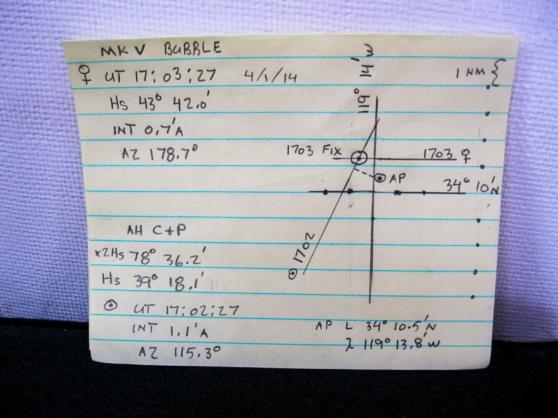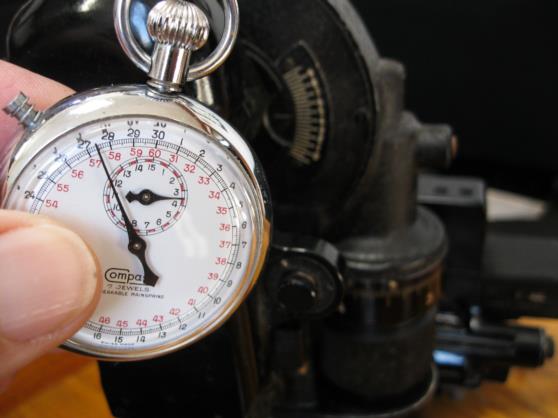
NavList:
A Community Devoted to the Preservation and Practice of Celestial Navigation and Other Methods of Traditional Wayfinding
From: Greg Rudzinski
Date: 2014 Apr 2, 08:15 -0700
An April fools CN test using two stopwatches and two sextants (octant) has been performed. This has proved to be quite the eclectic trial using an artificial horizon, C&P sextant, Navy MK V bubble octant, digital stopwatch, mechanical stopwatch, smartphone app, morning Sun, and daytime Venus near the meridian.
The sextant and octant were preset to the anticipated Hs and stopwatches were started at UT 17:00:00 4/1/2014. The rising Sun was observed first using the C&P, artificial horizon, and digital stopwatch. Daytime Venus was observed second with the Navy MK V bubble octant and mechanical stopwatch. Preserved times and Hs were loaded into Pilot Navigator version 6.9 to generate a two body fix latitude and longitude.
Timeline:
UT 17:00:00 stopwatches started and sextants preset.
30 seconds to complete AH Sun observation.
1 minute to complete bubble octant observation.
3 minutes 30 seconds to complete sight reduction fix and plot.
Comments:
Pro
The dual stopwatch/sextant method does expedite the two body observation process to under 2 minutes with time and Hs preserved on the instruments.
Con
Doubles the number of instruments.
When twilight period is short then there may be some usefulness to multiple sextants and stopwatches if space permits. Not practical for small craft.
Greg Rudzinski
P.S. Fun exercise :)
----------------------------------------------------------------
NavList message boards and member settings: www.fer3.com/NavList
Members may optionally receive posts by email.
To cancel email delivery, send a message to NoMail[at]fer3.com
----------------------------------------------------------------









